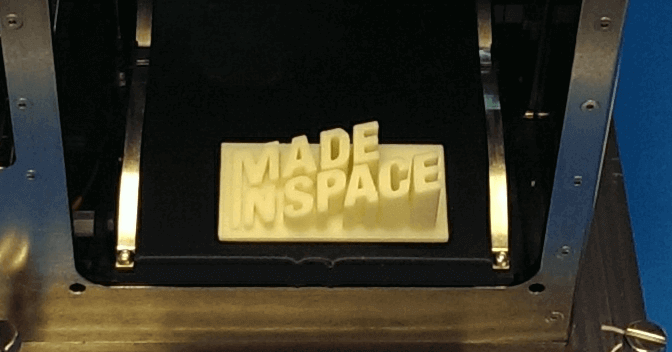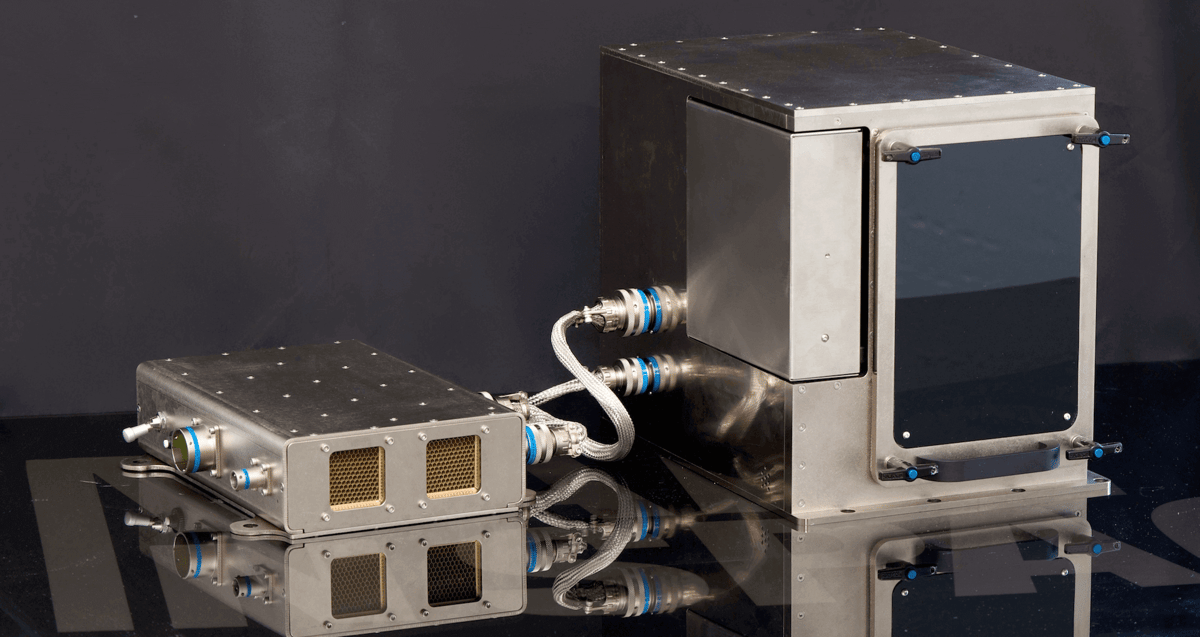Never one to let an advanced technology go to waste, the National Aeronautics and Space Administration (NASA) has ramped up its use of additive manufacturing (3D printing) to the point that the agency is now pushing the innovative edge further than ever before. What started with manufacturing small parts for its vehicles has evolved into methods that could help put a human on Mars. Let’s examine how NASA has made the prospect of 3D printing in space more viable than ever before.
Printing in space

As you might expect, 3D printing in space is more difficult than on earth. As a result, NASA had to start from scratch in order to fulfill its goal of utilizing additive manufacturing in the zero-gravity vacuum outside the Earth’s atmosphere.
NASA tackled this problem with a two-pronged approach based on the two most useful materials in space exploration: plastics and metals.
Metals: EBF3
Using metals in additive manufacturing has been going on for decades but NASA needed a way to do this in a vacuum. Electron Beam Freeform Fabrication (EBF3 or EBF3) is the answer to that question.
In process, EBF3 is very much like soldering: A metal wire is fed into the chamber where an electron-beam gun melts the wire according to given specifications. The innovation of the process goes far beyond this simple description.
On the material side, EBF3 has demonstrated production using a wide variety of metals including pure aluminum (Al), pure titanium (Ti), titanium and aluminum alloys, and Inconel 718. What’s more, any weldable alloy – with the exception of magnetic ferrous (iron-based) alloys – could be used in the process. Prime candidates for future use include copper, niobium, gold, silver, and platinum.
On the process side, EBF3 is the first 3D printing method that is no longer limited to the location and size of a given volume. This is because EBF3 is designed to be conducted in a vacuum. It’s a fine distinction but one that has made a world of a difference. Earth-based EBF3 must first induce a vacuum within an enclosed aluminum container before the process can start. Space-based EBF3, on the other hand, is free of this constraint – after all, space is one huge vacuum. The process can literally be conducted anywhere.
What’s more, EBF3 can make use of two or more wires during the build process. This means that multi-material parts, including alloy-based parts or layered parts with better surface properties, can be manufactured and put to use.
Plastics: ABS and Made In Space

3D printing with plastics is nothing new but the challenge lies in getting the process to work in a 0g environment. NASA employed Made In Space to develop a 0g printer for use on the International Space Station (it was deployed late last year).
Made In Space started by testing available 3D printers in parabolic flights simulating micro-gravity. Engineers discovered a number of issues that needed to be fixed. Harnessing that knowledge they built their model from the ground up specifically to operate in the closed-loop, zero-gravity environment of the ISS.
The current iteration of the printer – aptly named the Zero-G Printer – is controlled by a ground control team that can essentially email plans to an onboard computer and then operate the machine and oversee the process remotely.
The printer currently makes use of acrylonitrile butadiene styrene (ABS) plastic that is stored as a spool of solid filament. During the extrusion process, the plastic becomes very soft – but never liquid – and is assembled through a proprietary process similar to fused deposition modeling (FDM). ABS plastics degrade very quickly in the vacuum of space so parts will have to be put to use inside the space station. Made In Space has, however, promised that a second, larger printer will be able to use multiple materials – perhaps even metals – some of which can be used in the harsh conditions outside the protective skin of the ISS.
As Niki Werkheiser, In-space Manufacturing Project Manager at NASA’s Marshall Space Flight Center put it: “The capability to make what you need, when you need it, wherever you might be has larger implications than we can even imagine today. 3D printers would allow for an on-demand “machine shop” that would make long-duration space missions more feasible. Imagine going to Mars and rather than taking along 200,000 spare parts, you just take a printer and a few hundred pounds of feedstock.”
But interplanetary (and interstellar) travel holds the risk of running out of the raw material used in 3D printing. Made In Space is also developing a material recycler so that manufactured parts can be melted and the material reused rather than being ejected into space.
3D printing has ushered in a brave new world of manufacturing possibilities. As technology continues to develop and improve, 3D printing will no doubt be used more and more as humans push further and further towards the stars.
License: The text of "Ad Astra: NASA and 3D Printing" by All3DP is licensed under a Creative Commons Attribution 4.0 International License.